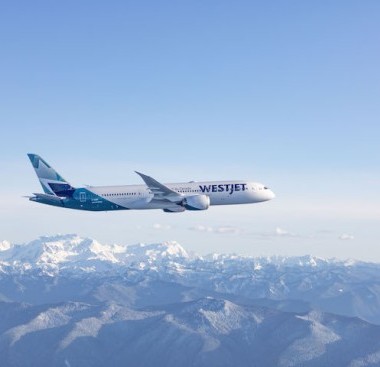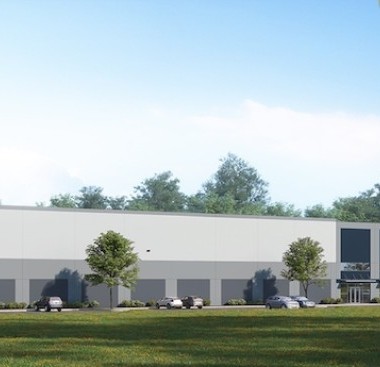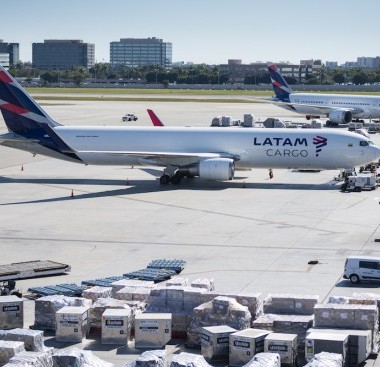Key bridge collapse closes Port of Baltimore and raises questions about what’s next?
Francis Scott Key Bridge collapse triggers a multifaceted response. But as the wreckage is untangled, there are still questions to be resolved.
The haunting video of the container ship, the Dali, has been seen millions of times on newscasts and social media. In the predawn hours of March 26, the ship’s lights blink on and off, almost like it’s making a distress call. The lights reflect off the glassy water, and a mounted surveillance video camera captures what happens next.
Something is wrong. The slow-moving, powerless cargo vessel is barely running on its emergency generators as the crew fights to retain control, and the captain urgently issues a “Mayday” call on the emergency channels.
Moments later, the 984 feet, weighing 95,000 tons when empty, containing 4,700 containers on board drifted into a support pylon on the 47-year-old Francis Scott Key Bridge at the entrance to the Port of Baltimore on the Patapsco River.
The bridge doesn’t have a chance. Eight construction workers fall into the frigid waters. Two were rescued and survived, but six tragically died.
The bridge collapses into the frigid water in a crumbled heap of twisted metal in seconds. A section of the bridge falls onto the deck of the container ship, crashing onto the TEUs and trapping the ship in place for weeks.
The U.S. and global supply chain faced another significant challenge in less than one minute.

A 50 foot Deep Shipping Channel Blocked
The critical deep-water, 700-foot-wide by 50-foot-deep shipping channel will be blocked for weeks, but within days, the U.S. Army Corp of Engineers scrambled to open two smaller access lanes on either side of the collapsed bridge to get ships in and out of the Port of Baltimore, and they insist the port will be fully operational by the end of May.
A steady stream of government leaders, from President Biden to cabinet officials to the Governor of Maryland Wes Moore, have toured the site and pledged to do whatever it takes to get the federal money to rebuild the bridge and provide financial assistance to the thousands of workers and others who depend on the port for their economic livelihood.
“I’m here to say your nation has your back and I mean it,” Biden said from the shoreline overlooking the collapsed bridge in Dundalk, just outside Baltimore on April 5 after seeing the damage firsthand. “Your nation has your back.”
Baltimore is the nation’s ninth busiest port. When it comes to Ro/Ro (Roll-on, Roll-off) cargo,” cars, light trucks, farm and construction equipment, it has led the country for 13 consecutive years. In 2023 alone, it processed 847,158 cars and light trucks.
Now, as family members grieve the workers who died and crews remove the debris from the bridge, officials are beginning to formulate a plan to get the hundreds of millions, and perhaps more a billion, that will be needed to build a new bridge and devise a strategy to prevent this type of event from ever happening again.
As has been the case in countless other supply chain disruptions in the last several years, the freight industry figured out ways to move the cargo with minimal disruption.
Supply Chain Diversions
According to the supply chain intelligence firm Project44, 43% of containers initially destined for the Port of Baltimore were rerouted to the Port of Virginia, 26% went to New York/Jersey, 13% to Wilmington, Delaware, and Newark-Elizabeth, New Jersey, received 10%. Another 8% went to other ports.
Major East Coast Class I railroads CSX and Norfolk Southern began designated freight rail runs between several ports to move freight to and from Baltimore, where, even as maritime operations remain suspended, trucks continue to deliver and pick up cargo.
“CSX is taking proactive steps to help mitigate freight shipment disruptions in the transportation industry by launching a dedicated service solution between Baltimore and New York, in response to the devastating March 26 incident in which a cargo ship collided with the Francis Scott Key Bridge leading to its collapse,” the train company said.
Dominic Covello, executive VP of Terminal Transportation Services, a Baltimore-based trucking and drayage company whose operations are centrally located to the Baltimore’s terminals, explained to the AJOT the two-part complexity of rerouting containerized freight. “Our importers really didn’t have any decisions in where that cargo went if it was past that point [already enroute aboard the containership]. So, the first phase of this was finding out where it’s going to go [containership operators new port destination] …. And most of that cargo ended up in two places. The ports in New Jersey, New York, the terminals there, and the terminals in Norfolk, Virginia. So, we as a trucking company anticipated that. And while our customers and importers were waiting for answers from steamship lines, within 24 hours, we opened up services to Norfolk, to Richmond, which has a barge from Norfolk, to Philadelphia terminals, to the Wilmington, Delaware terminals. Basically, the surrounding network from Baltimore,” Covello said. Adding, “We did not open up service to New York and New Jersey just because it’s operationally much more difficult and expensive to start up. So, we had that foresight and immediately were able to go to our customers and offer solutions…”
Conversely with containers that would normally be leaving the Port of Baltimore, Terminal Transportation Services foresaw the freight bottleneck, “and opened up services via the railroad…we saw the opportunity for people to get cargo moved via rail where trucking capacity was absorbed. Because even ourselves, if our drivers have to drive five hours instead of five miles, our capacity is going to shrink just like anybody else with the specialized hauling abilities of a drayage company. So, we went ahead and already opened up. Within those first 24 hours, we opened up services to the Norfolk Southern ramps out in Port Royal, Virginia, and Harrisburg, Pennsylvania. Knowing that those would probably be outlets when we got outside of the rail ramps here in Baltimore from CSX to Norfolk Southern.”
Quite aside from container traffic and Ro/Ro, there was other freight that needed to be moved. In particular the closure of the Port of Baltimore curtailed coal exports from the port. In 2023 Baltimore accounted for 28% of the US coal exports according to the Energy Information Administration (EIA)and is the nation’s second-largest hub for coal exports. As a result of the closure the EIA reduced its forecasts for U.S. coal exports for April by 33% and for May by 20% from previous forecasts. EIA Administrator Joe DeCarolis said, “We expect U.S. coal exports to recover toward the end of the summer or early fall, but there is significant uncertainty based on the timeline for the port reopening and how quickly exporters can adjust to export through alternative ports.” Shortly after the incidents the AJOT received reports of coal shipments being diverted to the Great Lakes ports as well as other East Coast ports such as Norfolk, Virginia.
Government Response
Government leaders point to the quick action in the hours after the bridge collapse and their work afterward to clear the temporary channels and remove the bridge as proof they can get things done.
On April 9, a bi-partisan coalition of state and federal leaders met in Washington with Secretary of Transportation Pete Buttigieg and others to discuss long-term plans to fund rebuilding the critical bridge on Interstate 695, which is part of the Baltimore Beltway.
“Whatever insurance litigation and other related processes play out, we are not going to wait for them to play out to make sure these dollars are getting to where they need to be,” Buttigieg said. “And where they need to be is helping the people of Maryland rebuild right now.”
On April 12th the Maryland Congressional Delegation, introduced the Baltimore BRIDGE Relief Act in both the US House and Senate to build back the Francis Scott Key Bridge.
According to a release issued by Maryland Congressman Kwesi Mfume, the legislation would authorize the federal government to fully fund the replacement of the Francis Scott Key Bridge and its approaches in Baltimore City, Baltimore County, and Anne Arundel County. There is also a liability section in the Baltimore BRIDGE Relief Act that restates a preexisting regulation requiring the federal government to be reimbursed if a state receives any compensation from insurance claims or any other source related to the bridge collapse.
Supply Chain Resilience
While there were concerns that the Port of Baltimore’s closure could cause another snag in the supply chain and increase shipping rates, that appears not to be the case.
The ocean freight rate benchmarking and intelligence platform Xeneta found in a recent survey that spot rates on the East Asia to East Coast of the U.S. routes have dipped by 1% since the collapse. Most of the ships destined for Baltimore are instead going to other East Coast ports, and whatever cargo needs to ultimately end up in Baltimore can be moved by rail or truck.
“Ocean freight container shipping rates may not have increased following the bridge collapse, but this incident is yet another problem for shippers to handle on top of all the other disruptions impacting supply chains at the moment, including the ongoing diversions in the Red Sea region and drought in the Panama Canal,” Xeneta Chief Analyst Peter Sand said.
As part of its effort to keep the supply chain fluid, the Federal Motor Carrier Safety Administration (FMCA) issued an Hours-of-Service (HOS) waiver for trucking impacted by the bridge collapse that will run until May 8 and could be extended, depending on the need.
Two additional hours were added to a driver’s daily driving limit, moving from 11 to 13 hours of driving in a 14-hour period.
However, it does not entirely suspend the HOS rules, as has been the case in other emergencies. The extension extends to “commodities rerouted from the port of Baltimore.”
The definition of commodities is left broad. It includes the most critical products regularly imported into Baltimore, including automobiles and other Ro/Ro commodities such as farm equipment. The National Transportation Safety Board (NTSB) investigation into the cause of the accident could take as long as 18 months. Crews were at the scene hours after the bridge collapsed.
NTSB Chair Jennifer Homendy gave Members of the Senate Commerce, Science and Transportation Committee an update on the status of the investigation on April 10, when the committee held a hearing on her renomination to the board.
Homendy said she expects a preliminary report on the incident to be issued during the first week of May, and for now, investigators are focusing on the ship’s electrical system as a possible cause.
“Of course, that’s preliminary,” Homendy said. “It could take different roads, different paths as we continue this investigation. It’s very early.”
Similar Stories
President Biden nominates Matt Kaplan to lead new Great Lakes Authority
Yesterday, the White House nominated Matt Kaplan to serve as the first federal co-chair of the Great Lakes Authority. The GLA was authorized by Congress in 2022 and will be…
View Article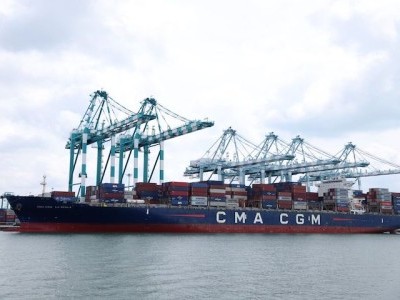
CMA CGM Announncement: PSS02 - From Asia to West Africa
View ArticleBND Commissioner Ralph Cowen completes final term
After more than a decade of dedicated service, Ralph Cowen, Commissioner, Place 1 of the Brownsville Navigation District (BND) concluded his final term. Cowen did not seek reelection in the…
View Article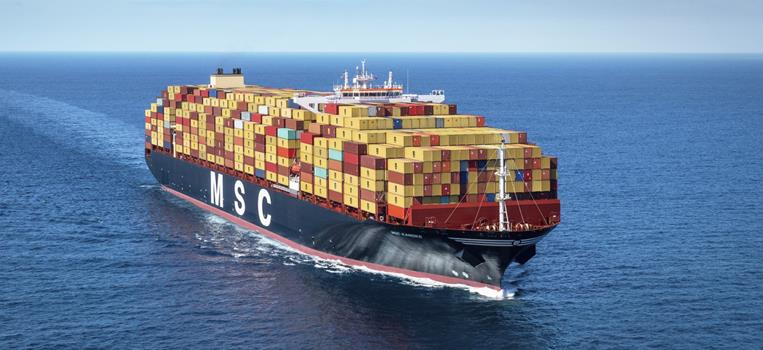
MSC Annoucement: GRI - General rate increase - CANCELLED
View Article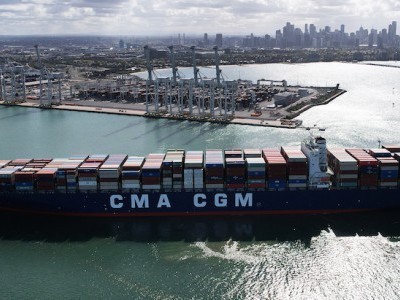
CMA CGM Expiration: Empty equipment imbalance surcharge - from Spain to East Mediterranean & Black Sea
View Article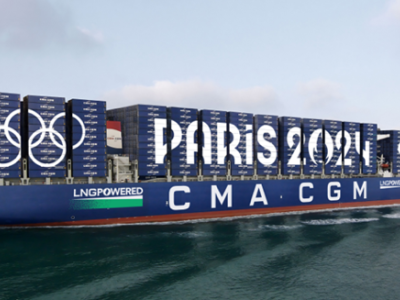
CMA CGM GREENLAND: Arrival of the Olympic Flame in Marseille
View ArticleGet the most up-to-date trending news!
SubscribeIndustry updates and weekly newsletter direct to your inbox!
